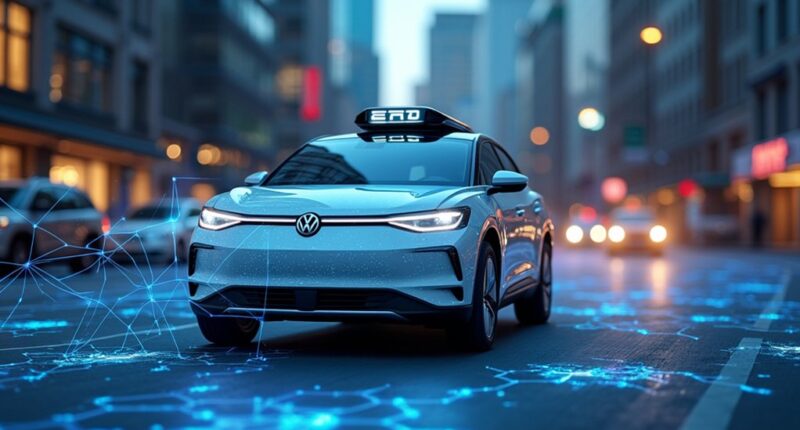In an industry notorious for overpromising and underdelivering on autonomous driving breakthroughs, Volkswagen ADMT’s 2025 alliance with Hivemapper emerges less as a visionary leap and more as a necessary admission: traditional, static maps are painfully inadequate for the dynamic demands of robotaxi navigation. Volkswagen’s autonomous driving subsidiary, confronted with the harsh reality that outdated cartography stymies real-world deployment, has reluctantly turned to Hivemapper’s Bee Maps platform—a decentralized, blockchain-powered solution that injects a desperately needed dose of real-time spatial intelligence into its robotaxi test fleet. The partnership’s core, leveraging imagery crowdsourced from everyday vehicles equipped with “Bee” dashcams and processed by AI, challenges the complacency of legacy mapping methods, offering fresh, continuously updated data that captures the chaotic fluctuations of urban streets with surgical precision. Data from Bee Maps feeds into Volkswagen’s perception systems, enhancing the vehicles’ ability to interpret complex environments. This collaboration also addresses important challenges of data privacy by leveraging blockchain’s inherent security features. This collaboration builds on Volkswagen ADMT’s existing testing programs using electric ID.Buzz minivans in Hamburg and plans for expansion to U.S. testing in Los Angeles with Uber, reflecting a strategic push to integrate decentralized mapping into real-world autonomous driving trials in key urban markets regional test deployment.
This collaboration, a curious yet telling convergence of traditional automakers and blockchain infrastructure purveyors, capitalizes on Solana’s immutable ledger to incentivize ordinary contributors with HONEY tokens, fostering an ecosystem that feeds the autonomous system’s insatiable appetite for accuracy. The result is a dynamic map that doesn’t just track permanent features but adapts instantly to transient roadworks, signage changes, and curbside idiosyncrasies, critical for the exacting choreography required by driverless vehicles. Volkswagen’s ambitions, stretching from Hamburg’s electric ID.Buzz minivans to U.S. trials in partnership with Uber, hinge on this data’s capacity to reduce navigation errors and bolster safety—a tacit acknowledgment that without such granular, real-time input, commercial robotaxi services remain little more than a pipe dream.
Hivemapper’s decentralized physical infrastructure network (DePIN) model, though innovative, also serves as a subtle indictment of incumbent mapping paradigms, exposing their sluggishness and rigidity in a world where seconds—and centimeters—matter. By outsourcing map updates to a global, token-incentivized crowd, Volkswagen implicitly concedes that traditional survey methods are obsolete relics, ill-suited for the relentless pace of urban change. This partnership, pragmatic rather than pioneering, forces the industry to confront an uncomfortable truth: without embracing decentralized, blockchain-enabled mapping, autonomous fleets will continue to flounder amid the unpredictability of real streets.









